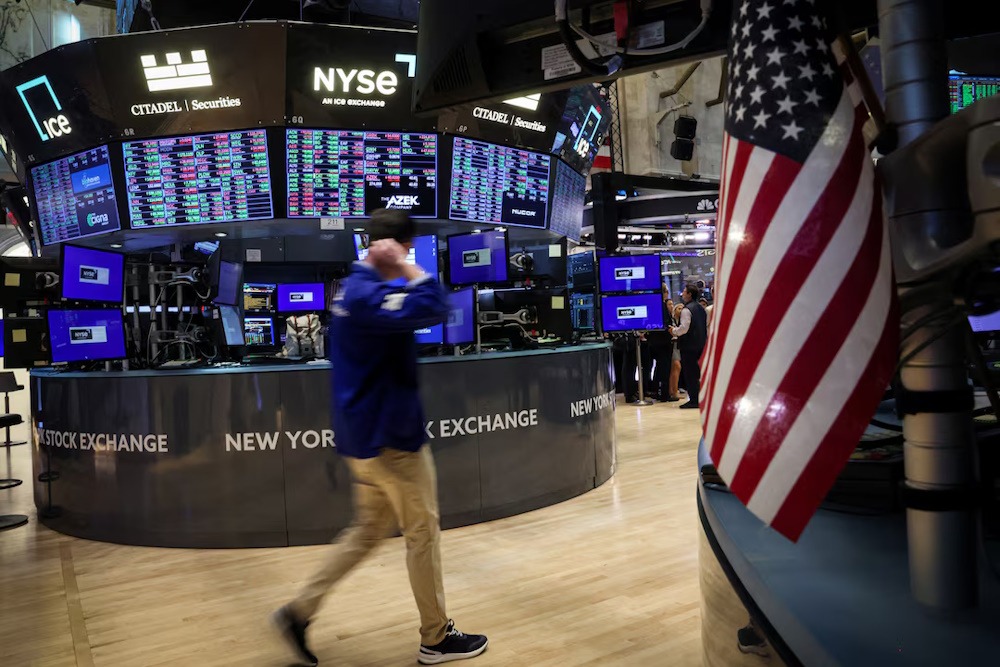
Equities experienced an uptick on Friday as market participants processed a nonfarm payrolls report for April that surpassed expectations, alleviating concerns regarding a potential recession and propelling the S&P 500 to its most extended winning streak in over twenty years. The S&P 500 experienced an increase of 1.47%, concluding the session at 5,686.67. This represented the broad market index’s ninth consecutive day of gains, establishing its longest winning streak since November 2004. The Dow Jones Industrial Average increased by 564.47 points, representing a rise of 1.39%, concluding at 41,317.43. The Nasdaq Composite experienced an increase of 1.51%, concluding the session at 17,977.73. Following Friday’s surge, the S&P 500 has successfully regained its losses incurred since April 2, the date when President Donald Trump unveiled his “reciprocal” tariffs. This follows a day after the tech-heavy Nasdaq achieved the same milestone.
Payrolls expanded by 177,000 in April, surpassing the 133,000 forecasted by economists surveyed by Dow Jones. The figure represented a significant decline from the 228,000 jobs added in March; however, it exceeded expectations amid heightened concerns regarding a potential recession last month. The unemployment rate was recorded at 4.2%, aligning with projections. “Markets breathed a sigh of relief this morning as the jobs data came in better than expected,” stated Chris Zaccarelli, chief investment officer at Northlight Asset Management. “Although concerns regarding a recession remain present, the buy-the-dip strategy may persist – at least until the expiration of the tariff pause.”
Prior to the robust jobs report, investors exhibited optimism following China’s announcement regarding its consideration of initiating trade negotiations with the U.S. Chinese authorities have reiterated their position that the U.S. ought to eliminate all unilateral tariffs, asserting in a statement that “if the U.S. wants to talk, it should show its sincerity and be prepared to correct its wrong practices and cancel the unilateral tariffs.” Later in the day, a report from The Wall Street Journal indicated that Beijing is amenable to engaging in trade discussions.
The market was also considering earnings reports from two members of the “Magnificent Seven.” Apple experienced a decline of 3.7% following the release of its fiscal second-quarter revenue from the services division, which did not meet analyst expectations. Furthermore, the manufacturer of the iPhone indicated that it anticipates an increase of $900 million in expenses for the ongoing quarter as a result of tariffs. Amazon shares experienced a slight decline following the company’s issuance of conservative guidance, which pointed to “tariffs and trade policies” as contributing factors. “We’ve already observed the response of financial markets to the administration’s initial tariff plan. Unless there is a shift in strategy come July, when the 90-day pause concludes, we can anticipate market behavior akin to that of the first week of April,” Zaccarelli also stated.
Equities have experienced a remarkable resurgence following Trump’s announcement last month regarding a temporary reduction of new tariff rates for the majority of countries to 10% for a duration of 90 days. The market has notably gained momentum recently, contributing to the S&P 500’s sustained performance, driven by robust earnings reports. All three major averages recorded their second consecutive week of positive performance. The S&P 500 increased by 2.9%, currently positioned over 7% beneath its peak in February, having previously experienced a decline of nearly 20% at one stage. The Dow experienced a 3% increase over the week, whereas the Nasdaq recorded a 3.4% gain.
